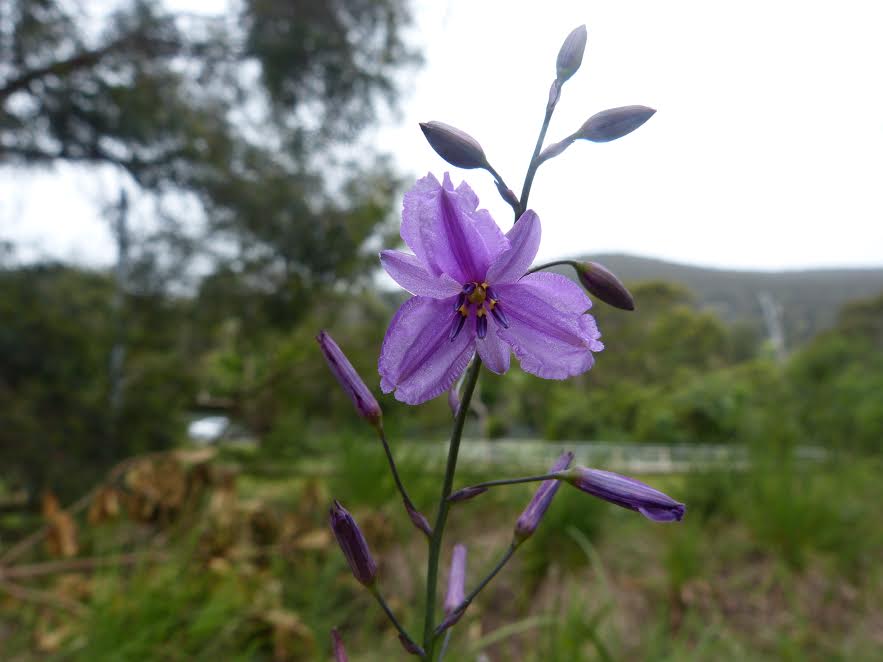Along the railway lines in the outer eastern suburbs of Melbourne, the remnants of the bushland that once stood there still grow amongst the weeds and rapidly expanding suburbia. These living museums of the local flora are very special places in our urbanised environment but lie neglected, forgotten and unknown to many people who walk past them every day.
For the past few years, a small group of community members have been weeding and managing a patch of remnant valley heathy woodland: a rare type of native bushland along the Belgrave railway line, almost in the centre of the township of Ferntree Gully.

The patch of bushland was rediscovered by Robert Pergl, who was riding his bike past the site every couple of days when heading to school at Swinburne University’s Wantirna Campus. He studied the trees and understorey of local indigenous plants and observed the ever-creeping threat of weed invasion and inappropriate mowing. Based on his studies, he concluded that the site was worth looking after due to the many rare and threatened plant species found here.
After gathering a group of mates to help out, a guerrilla friends group arose to care for this piece of bush. Guided by the practices of the Bradley sisters, the grandparents of modern bushland management practices and methods, the area was now feeling the love.


Over the past three to four years, guerrilla bushland workers have brought the reserve back to life, reducing the threat from grass weeds by hand-weeding and excluding mowing from sensitive parts of the area. The worst weed is quaking grass (Briza maxima), but with “Briza Blitz” themed working bees, the impact of this species has been significantly reduced.
Through monitoring and surveying of the site, we have found over 50 indigenous plant species present, with more returning following continuing weeding works. Among these species are wildflowers, native orchid species, sundews (Drosera sp.) and the critically endangered matted bush pea (Pultenea pudunculata).
Watching the area come back to life with the dedicated work of volunteers has been amazing. What began as a small group of friends managing the area as guerrilla bushland workers has resulted in the obtaining of a lease over the site through the help of the Knox Environment Society after many years of lobbying.
Margaret Mead, the academic and activist, said ‘Never doubt that a small group of thoughtful, committed citizens can change the world; indeed, it’s the only thing that ever has.’ And that’s true. We took it upon ourselves to bring this area back to life and reverse the global trend of declining biodiversity. It may only be a small patch, but if we all take on responsibility in our backyards and local areas, we can slow and reverse the tide of extinction affecting the plants and animals that we’re lucky enough to share this beautiful country with.
The reserve is now named Dunngorrm warragul kurnbrook Sanctuary. It was named by the Wurundjeri elders in the Woiwurrung language and means ‘Valley of the WildFlower.’ The Woirurrung language has been spoken on the land of the reserve for thousands of years.
Banner image of an exquisite chocolate lily (Anthropodium strictum) and is courtesy of Robert Pergl.


Leave a Reply